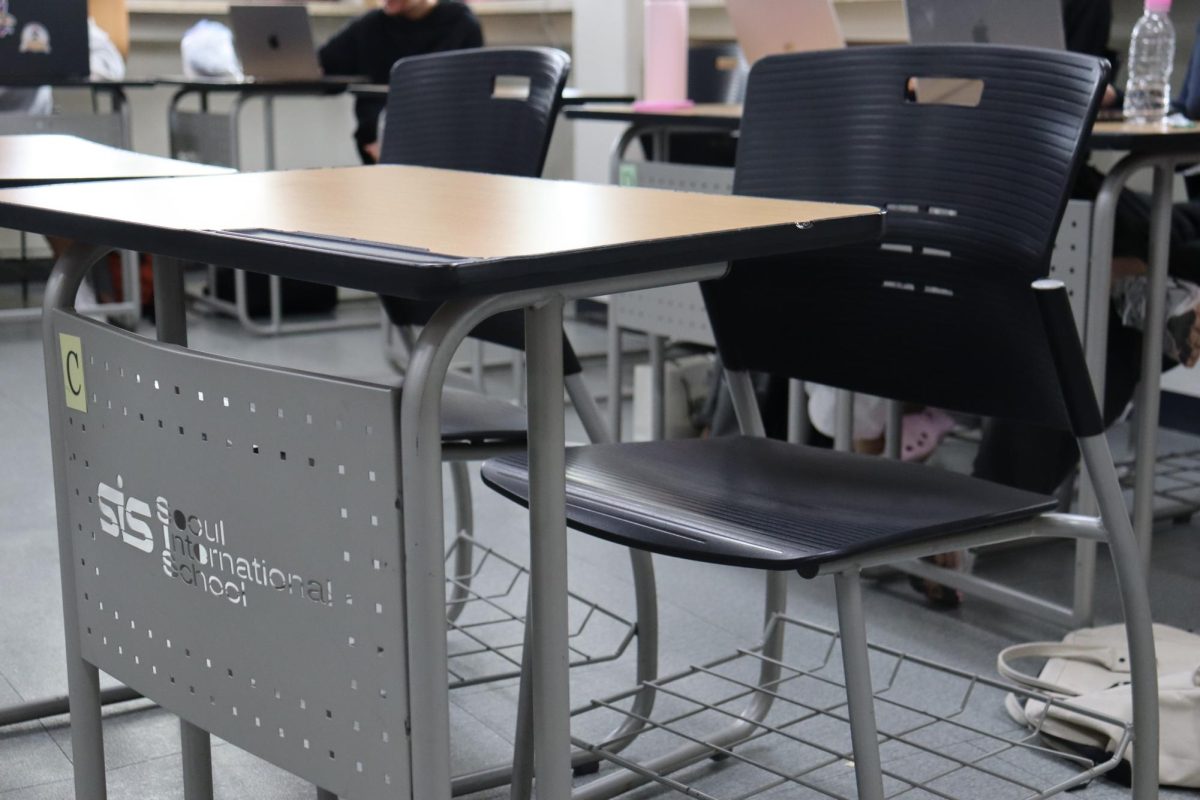The combination of the chair and desk, commonly called a combo desk, has been utilized in various learning environments since the 19th century, offering flexibility in shaping the learning environment for the learners. But, in SIS, the altered use of this innovative desk has revealed unforeseen counterproductivity.
Chair desks have been implemented in many settings, including lecture halls, high-school classrooms, and even cafeterias. They were developed so that people can efficiently and easily manage the equipment in their surroundings. With two pieces of furniture attached together to form one, the area can be organized with minimal effort while maximizing the space.
Specifically in learning settings, this equipment—where the chairs are locked in a certain position and restrict mobility—was adopted to foster better posture, prevent one from leaning back, and move chairs around, thereby enhancing better focus in the classroom and avoiding distractions. The chair-desks are supposed to promote better learning behaviors.
Yet, both students and teachers have questioned whether SIS chair-desks can successfully fulfill the intended purpose in the classrooms.
“When I first came, I was given the combo desks and the trapezoid desks for the science department,” Angela Campbell, a teacher at SIS, said. “But I requested the board desks that are used in the science department because I thought the chair and desks attached were not suitable for the learning environment in the science classroom. It restricted the flexibility in the classroom. It was difficult to form different combinations of the classroom dynamic.”
The combination of the chair and desks in SIS is built differently compared to the typical chair desks in other classrooms, where the desks are generally smaller, appearing to be an addition to the chair part of the furniture. Given its smaller size, which takes up less space compared to having two pieces of equipment for both chairs and desks separately in the area, they can maximize class space. On the other hand, SIS chair-desks simply look like two pieces of furniture attached together that leave too much room between the chair and the desk.
The excessive width contributes not only to the reduction of space efficiency but also to the learning posture of many students. When we look around the class during a lecture or work time, a common posture is prevalent throughout the classroom: leaning back until their shoulders rest on the back of the chair and feet reaching out of the desk area or slouching so that they could move closer to the desk and elbows pressing into their laps. As a result, poor posture is frequently observed, straining students’ backs and causing discomfort and loss of focus in the learning environment. What was once implemented with the goal of improving students’ productivity and engagement is now counterproductive, undermining students’ concentration.
“If you are trying to move the classroom arrangement in different ways more often, I do think it does make it easier for students and teachers since you could pull it at the same time,” Ms. Campbell said. “But I definitely don’t think it helps with the learning posture. Many of the students lean back on the chair or lean forward because there is too much room for them between the desk and themselves.”


